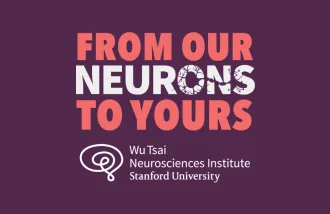You may know the amino acid taurine as a common ingredient in energy drinks.
It’s actually one of the most abundant amino acids in humans, where it plays key roles in our muscles, our brains, and in the mitochondria that power all our cells. Research suggests that taurine may play a beneficial role in human health, but the mechanisms have long been murky.
In a new study, published August 7, 2024 in Nature, researchers supported by a Knight Initiative Innovation Grant discovered that N-acetyltaurine, a byproduct of taurine and acetate, may be responsible for many of taurine’s beneficial effects.
Read more about the study at Stanford Medicine.
These discoveries not only deepen our understanding of metabolic processes affected by taurine but also open new avenues for tackling obesity and related metabolic disorders.
The research was conducted by the lab of Jonathan Long, an associate professor of pathology at Stanford Medicine and an institute scholar at Sarafan ChEM-H.
Long answered some of our questions about the new findings and their potential implications for human health and resilience:
Q&A with Jonathan Long
Why were you interested in studying taurine? What makes this molecule special?
Taurine is a fascinating and understudied component of our diet. We eat a lot of taurine– it’s very high in shellfish, meats, and energy drinks like Redbull – making it a significant part of many diets. Some research has shown that taurine might have a big impact on our health, although exactly how it does this is still not clear. Taurine plays multiple roles in our body—it helps our muscles work properly, supports the function of mitochondria (the energy factories of our cells), and even interacts with the brain to affect neurotransmitters like GABA, which are critical for brain communication.
Moreover, taurine can transform into different substances known as taurine metabolites, each with its unique functions. About a decade ago, scientists discovered a new taurine metabolite called N-acetyltaurine. The amount of this metabolite in our bodies is linked to how much taurine we consume and increases with exercise and alcohol intake. This connection sparked interest in studying N-acetyltaurine more closely to uncover specific ways taurine might be benefiting or affecting our health. By learning about the biochemical processes that create and break down N-acetyltaurine, we hoped to gain deeper insights into taurine’s role in our nutrition and well-being.
What was the most surprising aspect of these findings to you? Why was it different from what you expected? (Or if nothing was particularly surprising, what was most exciting?)
Before this study, we weren't sure if N-acetyltaurine was just an inactive and inert byproduct of taurine metabolism, or if it actually had a specific role in how taurine affects our body. The most exciting discovery from this research is that N-acetyltaurine is indeed important and actively involved in our body's processes. This was determined by finding a special enzyme named PTER that specifically breaks down N-acetyltaurine, showing that the presence and levels of N-acetyltaurine are tightly controlled by our genes and biochemical pathways.
In addition, the gene responsible for making the PTER enzyme had been previously associated with body weight in large-scale genetic studies. Leveraging this information, we were able to demonstrate a clear and impactful connection between N-acetyltaurine, the PTER enzyme, and body weight regulation. This is particularly significant when there's a high intake of taurine in the diet. For instance, in experiments, mice that lack the PTER enzyme accumulate N-acetyltaurine and show an increased sensitivity to taurine's anti-obesity effects, either from dietary supplementation or in response to endurance exercise. Moreover, giving normal mice N-acetyltaurine directly can lead to reduced food intake and lower body weight, suggesting a new potential pathway for managing obesity.
Could there be downsides of reducing PTER activity and allowing N-acetyltaurine to accumulate? How do we explain the potential beneficial effects? Would we expect negative side effects?
PTER degrades N-acetyltaurine. PTER knockout (KO) mice accumulate N-acetyltaurine, which mirrors the effects of exercise or dietary taurine supplementation—both lead to accumulation of N-acetyltaurine. Thus, PTER-KO can be seen as a genetic method to make us hypersensitive to the effects of exercise or taurine supplementation (all positive outcomes).
Are there any side effects? So far, PTER-KO mice appear quite normal, and no obvious adverse effects have been observed. However, understanding any potential side effects is crucial for the therapeutic translation of this pathway to humans.
What are the most urgent next steps for you in advancing the impact of this research?
There are two important questions. First is a basic question related to additional pathways of N-acetyltaurine metabolism. We found PTER, which is responsible for breaking down N-acetyltaurine, and clearly shows that N-acetyltaurine is an important metabolite effector of taurine intake. But what makes N-acetyltaurine? We have some evidence that there are also specific genes and biochemical pathways responsible for making this metabolite, but the specific identities of those pathways are not known. We are trying to figure that out now.
The second area of focus is more applied and broad. Given that dietary taurine and its conversion into N-acetyltaurine seem to influence health positively, a big question is whether we can deliberately manipulate this pathway to fight obesity or leverage taurine's beneficial effects in other health conditions like brain health, muscle strength, or overall physical performance. This could involve developing drugs that enhance the production or function of N-acetyltaurine to replicate or amplify the health benefits of taurine. Essentially, the research is moving towards not just understanding these biochemical processes but also figuring out how they can be used therapeutically to improve human health.
Just to tease a more neuroscience-related connection, we also suspect N-acetyltaurine itself must be working directly on brain. In our study, we show interaction of N-acetyltaurine with the hindbrain circuit involved in feeding regulation (where PTER also happens to be expressed). This is all quite new, but we’re excited to get a better handle on how this pathway affects appetite and body weight regulation.





